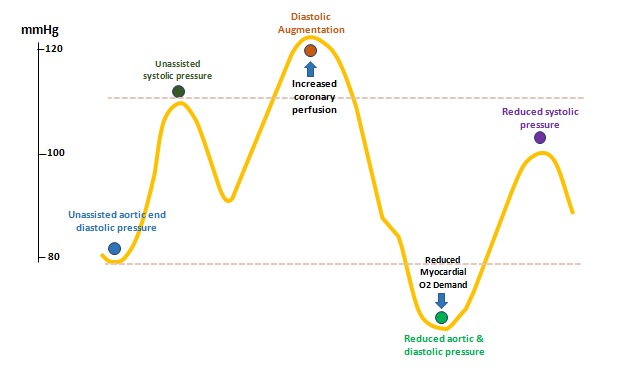IABP
- What is IABP?
- Indications
- Fundamentals of cardiac physiology
- Principles of the IABP
- IABP system principal parts
- Balloon sizing
- Timing of inflation and deflation
What is IABP?
- Intra Aortic Balloon Pump or Intra aortic balloon counter pulsation
- A flexible catheter is inserted into the femoral artery and passed into the descending aorta.
- Temporary support for the left ventricle by mechanically displacing blood within the aorta.
- Increases myocardial oxygen perfusion while at the same time increasing cardiac output.
- Increasing cardiac output increases coronary blood flow and therefore myocardial oxygen delivery.
- Correct positioning is critical in order to avoid blocking off the subclavian, carotid, or renal arteries.
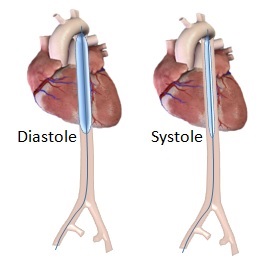
Indications
- Preoperative for high risk surgery (CABG)
- Intraoperative support during surgery
- Support during transport
- Support for high risk cath/PCI (Percutaneous coronary intervention)
- Refractory angina
- Refractory ventricular arrhythmias
- Refractory left ventricular failure
- Complications of AMI (Acute myocardial infarction)
- Weaning from cardiopulmonary bypass
- Cardiogenic shock
- Bridging device to other mechanical assist
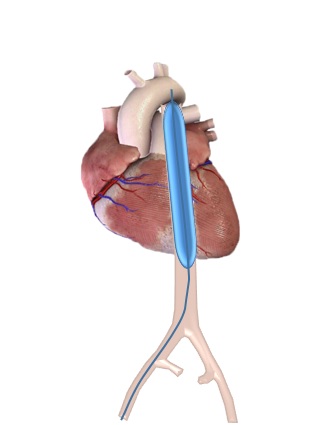
Fundamentals of cardiac physiology
- Preload: The ventricular wall tension at the end of diastole that often approximated by the end-diastolic volume or end-diastolic pressure. (referred to as filling pressure)
- Afterload: The ventricular wall tension during contraction; the resistance that must be overcome in order for the ventricle to eject its contents that often approximated by the systolic ventricular (or arterial) pressure.
- Stroke Volume: Volume of blood ejected from the ventricle in systole (= end-diastolic volume - end-systolic volume).
- Cardiac Output: Volume of blood ejected from the ventricle per minute (= stroke volume X heart rate).
Principles of the IABP
- Inflation of the balloon occurs at the onset of diastole. At that point, maximum aortic blood volume is available for displacement because the left ventricle has just finished contracting and is beginning to relax, the aortic valve is closed, and the blood has not had an opportunity to flow systemically.
- The pressure wave that is created by inflation forces blood superiorly into the coronary arteries that helps perfuse the heart.
- Blood is also forced inferiorly increasing perfusion to distal organs (brain, kidneys, tissues, etc.)
- The balloon remains inflated throughout diastole. At the onset of systole, the balloon is rapidly deflated.
- The sudden loss of aortic pressure caused by the deflation reduces afterload so:
- The left ventricle does not have to generate as much pressure to achieve ejection since the blood has been forced from the aorta.
- This lower ejection pressure reduces the amount of work the heart has to do resulting in lower myocardial oxygen demand.
The IABP system has two principal parts:
- A flexible catheter (2 lumen) with a balloon (cylindrical polyethylene) at the distal tip
- for distal aspiration/flushing or pressure monitoring
- for the periodic delivery and removal of helium gas to a closed balloon.
- A mobile console containing a pump
- system for helium transfer
- computer for control of the inflation and deflation cycle
Mobile Console
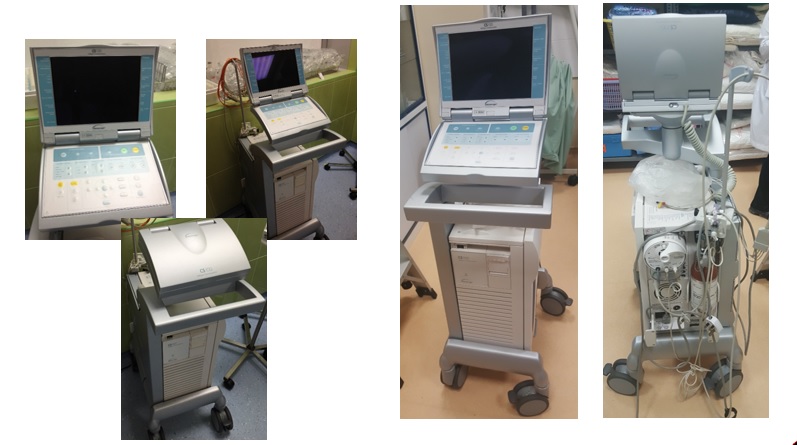
IABP Catheter
The shaft of the balloon catheter contains 2 lumens:
one allows for gas exchange from console to balloon
second lumen:
- for catheter delivery over a guidewire
- for monitoring of central aortic pressure after installation
- Balloon is made of a long polyurethane membrane mounted on a vascular catheter (10-20 cm)
- Various catheter sizes - usually 7.5 F with the balloon size chosen according to height (25–50cc capacity)
- May be sheathed or sheath-less
- Optimal 80-90% of aorta occluded (not 100%)
- Helium is used to inflate the balloon as its low viscosity means there is little turbulent flow so the balloon can inflate fast and deflate slowly. It is also relatively benign and eliminated quickly if there is a leak or the balloon ruptures
Schematic design of IABP catheter
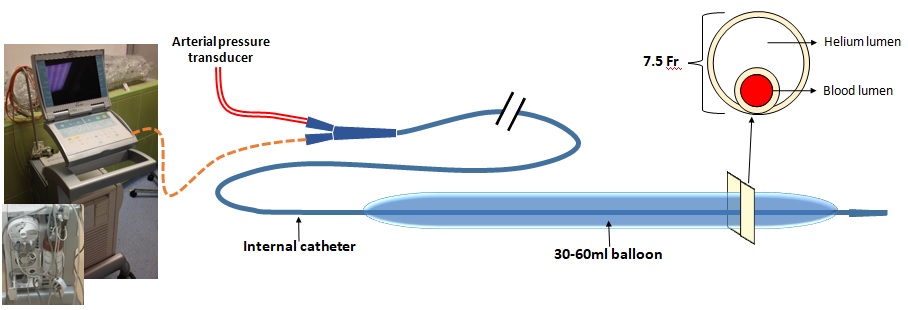
Balloon sizing
- Based on patients height, Balloon length and diameter increases with each larger size
- Pediatric balloons also available : sizes 2.5, 5.0, 12.0 and 20 cm³

Benefits of larger volume IABs:
- More blood volume displacement
- More diastolic augmentation
- More systolic unloading
Hemodynamic effects of IABP therapy
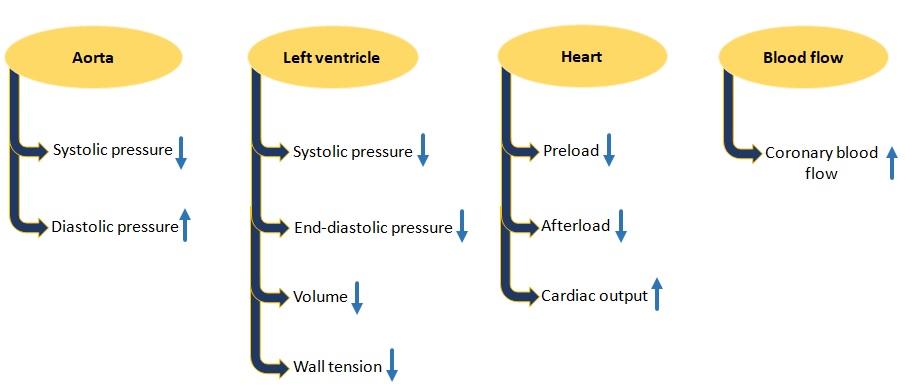
Timing of inflation and deflation
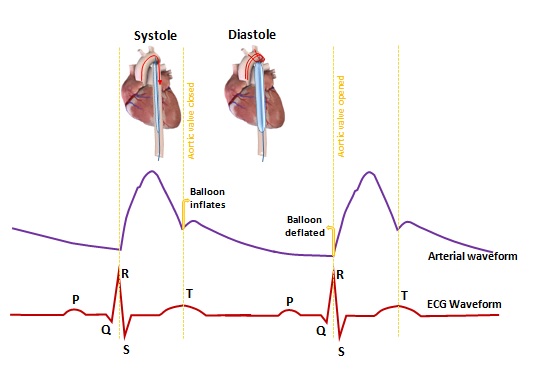
ECG signal – most common
- Inflation
- middle of T wave
- Deflation
- peak of R wave
The normal augmented waveform
